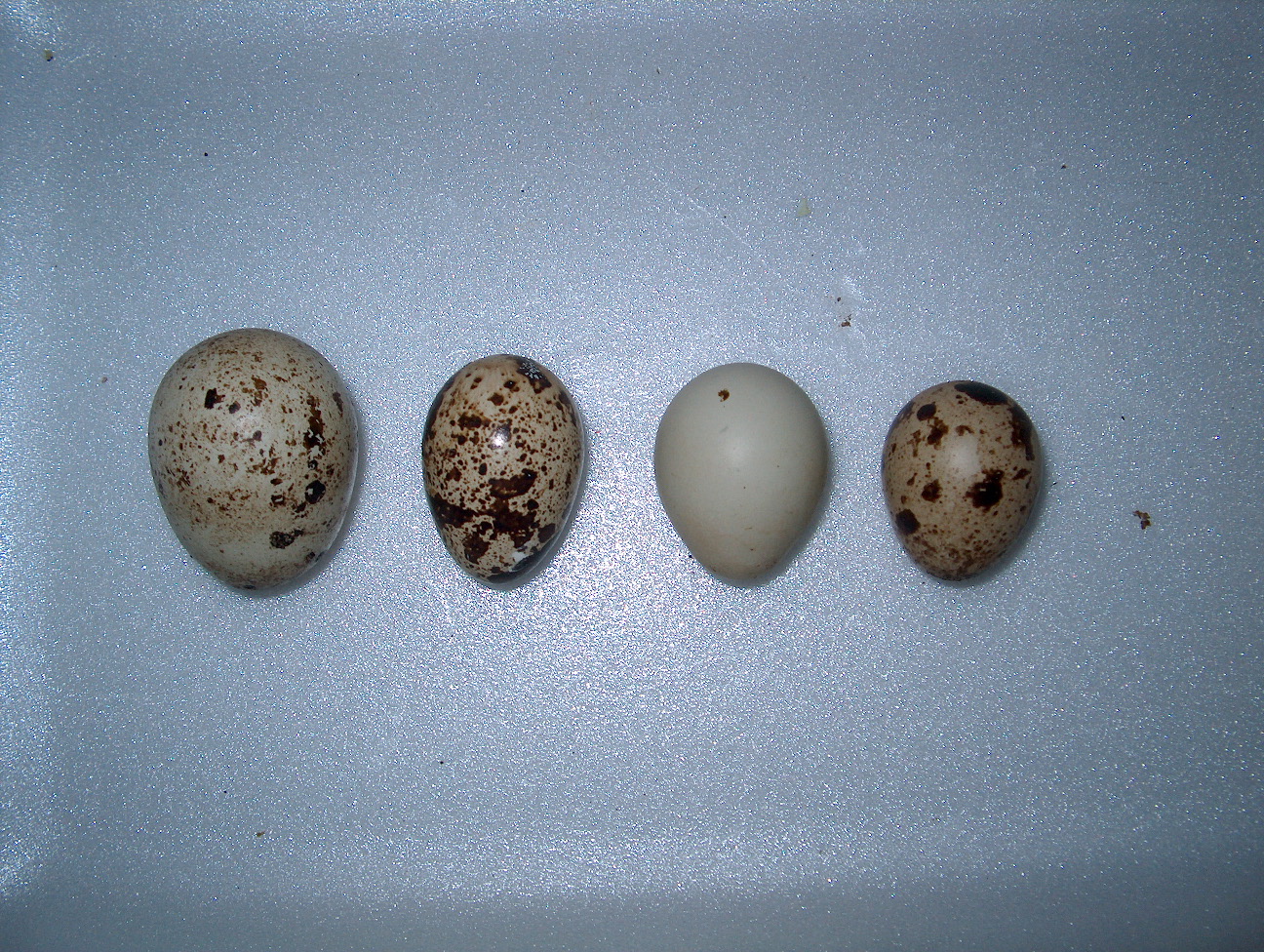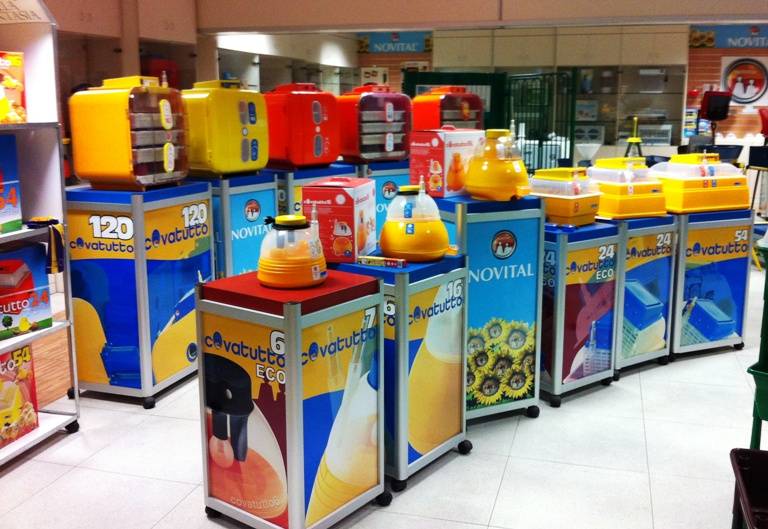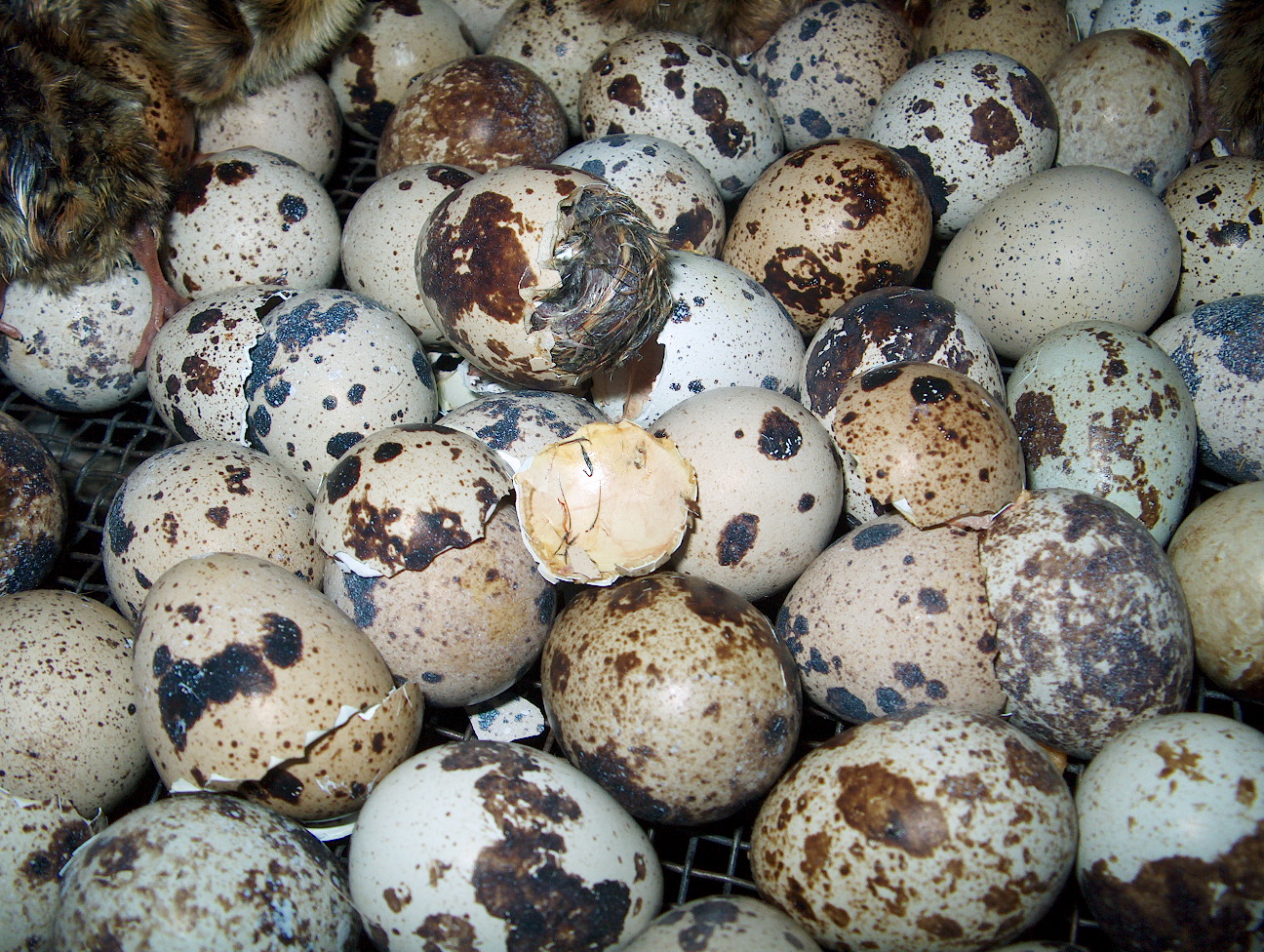The Quail Farming Guide
La Belle Caille de Blé – Your Partner in Quality Equipment Offers You This Guide
Table of Contents
| Chapter | Title | Page / Destination |
|---|---|---|
| 1 | Foreword | Introduction to quail farming, purpose of the guide |
| 2 | The Quail | Quail species, domestication, and general info |
| 3 | Breeding Stock | Selecting males and females, fertility, cage setup |
| 4 | Fresh Eggs | Value, nutrition, and handling |
| 5 | Fertile Eggs | Collection, storage, ideal egg characteristics |
| 6 | Incubation | Types of incubators, temperature, humidity, egg placement |
| 7 | The Incubation Period | Egg turning, temperature control, embryo development |
| 8 | Hatching | Day 14, increasing humidity, pipping and chick emergence |
| 9 | The First Hours of Life | Transfer to brooder, initial care, feeding, water |
| 10 | The Brooding Period | Heat management, weekly temperature reduction, hygiene |
| 11 | Feeding Chicks | Starter feed, protein content, transition to grower feed |
| 12 | Health & Hygiene | Daily checks, disease prevention, water hygiene |
| 13 | Selecting Birds | Criteria for strong, productive quails |
| 14 | Housing for Adult Birds | Cage types, space requirements, lighting |
| 15 | Feeding Adult Quails | Feed types, protein and calcium, water |
| 16 | Light & Production | Daylight duration, timers, stress reduction |
| 17 | Molting | Causes, duration, management tips |
| 18 | Slaughtering | Ideal age, fasting, hygiene, meat quality |
| 19 | Managing Egg Distribution | Daily collection, sorting, tracking egg origin |
| 20 | Selling Quail Products | Eggs, meat, packaging, labeling, marketing |
| 21 | Economic Management | Costs, break-even point, investment, risk management |
| 22 | Sustainability & Animal Welfare | Welfare-friendly practices, eco-friendly feed, monitoring health |
Chapter 1 – Foreword
The interest in raising poultry or small game is growing steadily. Many future quail breeders have questions about the challenges associated with this type of farming.
This small guide is designed to give you practical information and motivate you to pursue your hobby or small business.
Chapter 2 – The Quail
The domestic quail belongs to the Phasianidae family (pheasant-like birds).
It is relatively easy to raise and does not require complicated facilities.
Quails have long been raised for their meat and eggs, and their consumption continues to grow. In southern countries, they are used in many traditional dishes.
A quail breeder is called a coturniculturist, and the activity is known as coturniculture.
It is important to raise only domesticated strains of quail.
Chapter 3 – Breeding Stock
Quails intended for reproduction reach sexual maturity at 6 to 7 weeks of age.
For good fertility, keep 1 male for 3 to 4 females.
In a half-square-meter cage, you can house 8 males and 24 females, which gives optimal results.
Our VC47 and VC48 cages include feeders with a capacity of about 1 kg.
A breeding quail consumes around 35 g of feed per day, so a single evening feeding is usually sufficient.
Check waterers daily: water is essential for quail health and necessary to maintain egg production. Without water, egg-laying stops immediately.
The room temperature must not fall below 15 °C.
Below this, quails will molt, which interrupts laying for nearly six weeks.
Proper feed and supplements can shorten this period (see our “Feed and Supplements” section).
With good management, breeding birds remain productive for around 8 months, during which each laying female can produce up to 250 eggs.
Une femelle et un mâle de caille

Chapter 4 – Fresh Eggs
Quail eggs are appreciated for their delicate flavor and small size—children especially love them.
They are considered relatively hypoallergenic and may help with certain sensitivities.
Selling fresh quail eggs can provide an additional income stream.
Do not underestimate their commercial value.
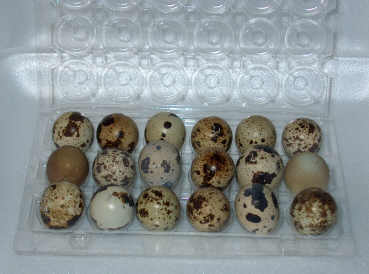
Chapter 5 – Fertile Eggs
Eggs collected from breeding cages (e.g., the VC47) are typically 80% fertile, sometimes more.
Eggs are usually laid in the evening; collect them gently.
Store fertile eggs in a cool place, around 15 °C, with about 60% humidity—a pantry or cellar is ideal.
If the air is too dry, the egg’s albumen can evaporate slightly through the shell, reducing hatching success.
Eggs can be stored for up to 10 days before incubation.
Before setting them in the incubator, sort them:
-
too small
-
too large
-
too pointed
-
too round
→ These should be excluded from incubation and sold as fresh eggs.
An ideal hatching egg weighs around 12 g, is about 34 mm long, and has a minimum diameter of 25 mm.
These values can vary depending on the strain.
.
Chapter 6 – Incubation
There are two types of incubators:
-
Forced-air incubators (with ventilation)
-
Still-air incubators
Still-air incubators must be installed in a well-ventilated room to ensure proper air exchange.
When setting up an incubator, consider:
-
humidity
-
temperature
-
day/night fluctuations
Settings:
-
Thermostat: 38 °C
-
Preheat for at least 48 hours before setting eggs
-
Place a water container to maintain humidity
Eggs may be placed:
-
horizontally, or
-
pointed end down
Leave space between eggs for good air circulation.
Chapter 7 – The Incubation Period
Quail eggs hatch in 17 days.
For the first 14 days, turn the eggs 3 to 5 times per day, unless the incubator includes an automatic turner.
Turning prevents the embryo from sticking to the shell.
Maintain the temperature at 38 °C.
Monitor the water level carefully, as humidity is crucial to embryo development.
Chapter 8 – Hatching
On day 14, stop turning the eggs.
Increase humidity slightly to make hatching easier.
From this point onward, do not open the incubator, except in case of emergency.
Chicks start to hatch by making a small crack in the shell (pipping).
It may take several hours for them to fully emerge.
Let chicks dry completely inside the incubator before removing them.
Chapter 9 – The First Hours of Life
Once dry, transfer chicks to the brooder.
Because they are extremely small and delicate, ensure there is no draft and that the brooder is clean and disinfected.
Scatter feed on paper for the first few days so chicks can easily find it.
Provide water in a very shallow drinker, ideally with pebbles to prevent drowning.
Chapter 10 – The Brooding Period
Brooder temperature:
-
35 °C for the first week
-
then reduce by 2–3 degrees each week
At 4 weeks, quails no longer need supplemental heat.
Use a heat lamp or heating plate with reliable temperature control.
Change the water daily and maintain excellent cleanliness.
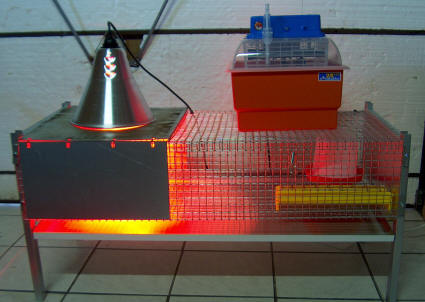
Chapter 11 – Feeding Chicks
Quail chicks require a very high-protein, energy-rich starter feed.
Use a feed containing 24% to 28% protein.
Avoid chicken starter with insufficient protein.
Requirements:
-
fine crumb texture
-
high digestibility
-
medication-free unless necessary
At 4 weeks, switch to a grower feed.
CHAPITRE 10 - L’ENGRAISSEMENT
Les cailleteaux ont déjà bien profité dans la maternité. Leur poids atteint environ 60 grammes après une dizaine de jours. L'important c'est avoir placer des bons oeufs dans une bonne couveuse, et voilà le résultat.
Chapter 12 – Health & Hygiene
Good hygiene is the foundation of successful quail farming.
Key points:
-
Clean and disinfect equipment regularly
-
Remove wet bedding and leftover feed daily
-
Provide good ventilation without drafts
-
Check birds daily for signs of illness:
-
lethargy
-
fluffed feathers
-
diarrhea
-
reduced appetite
-
Water is a major contamination source: change it daily.
Prevention is always better than treatment.
Chapter 13 – Selecting Birds
Proper selection is essential for strong, productive quails.
Choose birds based on:
-
vitality
-
weight
-
body shape
-
laying ability (females)
-
fertility (males)
Avoid small birds or those with deformities.
Use breeding stock from healthy, productive lines.
Chapter 15 – Feeding Adult Quails
Adults consume 25–30 g of feed per day.
Feed types by stage:
-
starter feed
-
grower feed
-
layer feed
Layer feed should contain:
-
20–22% protein
-
high calcium
-
good energy sources
Water must be clean and always available.
A lack of water immediately stops laying.
Chapter 16 – Light & Production
Quails need light to lay eggs.
Provide:
-
14 to 16 hours of light per day
Use a timer for consistency.
Avoid overly bright light—this causes aggression and feather pecking.
Chapter 17 – Molting
Molting is a natural period during which quails stop laying.
It occurs when:
-
temperatures drop
-
light decreases
-
birds experience stress
-
nutrition is poor
During molt, quails may not lay for 4 to 6 weeks.
To reduce its impact:
-
maintain temperature above 15 °C
-
keep adequate light
-
provide richer feed or supplements
-
avoid sudden changes
Chapter 18 – Slaughtering
For meat production:
Ideal slaughter age:
-
6–7 weeks for light strains
-
8–10 weeks for heavier strains
Before slaughter:
-
Fast birds for 12 hours, but keep water available
-
Work cleanly and hygienically
-
Chill the meat quickly afterward
Quail meat is delicate and highly appreciated.
Chapter 19 – Managing Egg Distribution
When your quails are laying, check and collect eggs daily.
Sort eggs based on your goals: incubation or commercial sale.
Track egg origin (cage, group) to monitor fertility and quality.
Chapter 20 – Selling Quail Products
Your quail farm may offer:
-
fertile eggs for breeders
-
fresh eggs for consumers or restaurants
-
quail meat (if producing meat birds)
Ensure proper packaging, with clear labeling (weight, shelf life, production details).
Chapter 21 – Economic Management
Monitor all costs: feed, cages, energy (incubators), labor, etc.
Calculate your break-even point: how many quails, eggs, or carcasses must be sold?
Consider investments in automation or expansion if profitable.
Include risk management: disease prevention, feed reserves, replacement stock.
Chapter 22 – Sustainability & Animal Welfare
Promote welfare-friendly quail farming by ensuring ventilation, space, clean water, and hygiene.
Consider eco-friendly feed sources and supplements.
Communicate your welfare practices to customers—they add value.
Inspect your quails regularly and intervene promptly to reduce stress and mortality.
Pour la Belle Caille de Blé - Lhotellerie Fernand
Copyright 2005 (Tous Droits réservés) pour photos et informations Figurant sur le site
Interdit d'utiliser les textes ou images du site autre que pour usage privé.
Reproduction même partiel interdite.



